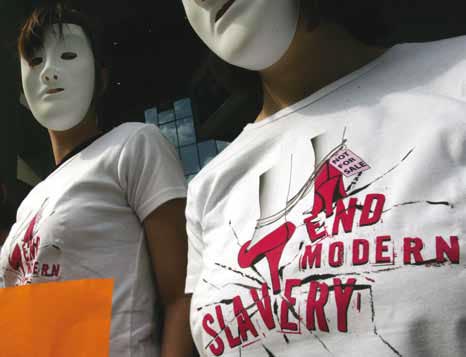
By Shreya Karia
So What’s Being Done?
As part of the Kenyan government’s efforts to combat human trafficking, a five-year national plan of action was initiated in 2008. A national steering committee consisting of CRADLE, the Ministry of Youth, the Law Society of Kenya and other stakeholders identified strategic priorities and agendas that each body ought to initiate. According to Sofia, there is the political will to further the cause. Through the efforts of MP Millie Odhiambo, the Kenyan government signed into law new legislation to crack down on offenders and offer some form of recourse to victims in late 2010. Convicted traffickers face a 30 year jail term or a hefty KSH30 million fine. The law now clearly defines the role of each stakeholder, which means unlike previously, bodies can be held legally accountable for not following through on counter trafficking measures.
Still More to Do
The challenge however, lies on the ground to ensure that police, prosecutors and child care workers are aware of the legal implications and technicalities. NGOs such as IOM and CRADLE become indispensible for this. Conducting a simple test to see just how effective government measures are, resulted in a trip to the local District Commissionaires office in Westlands to report a case of child trafficking. Filled with great optimism that I would encounter a receptive welcome, instead I found the child welfare worker had left for the day at 2:30PM. I was neither able to get her number nor obtain anyone else’s assistance.
Instead I was requested to fill out a visitor’s book, I was repeatedly assured that she would call. I am still waiting. Incidentally the visitor’s book told a similar story; NGOs, donors and general public, all either paying a courtesy call to discuss programme initiatives or ask for assistance. The reality? No legislature or advisory board can make a difference if there is no will on the ground to challenge the status quo.
And yet human trafficking is not just a pandemic affecting Kenya. It is a global enterprise worth US$32 billion. It affects every country on the planet, where helpless people find themselves traded for domestic servitude, sexual exploitation or child soldiering. In recognition of these harrowing statistics the UN launched a global action plan to combat the scourge through UNGIFT (United Nations Global Initiative to Fight Human Trafficking). It encourages member states to work together to strengthen the prevention and protection of those trapped. Part of the programme facilitates for a global fund to rehabilitate victims.
Celebrity Factor
In an age where ‘the celebrity phenomenon’ dictates much of our perception, Oscar winning film, Slum Dog Millionaire, put the topic front and centre in a manner that no institution had previously succeeded in doing. DNA, a foundation conceived by Demi Moore and Ashton Kutcher, focuses on child counter trafficking efforts. Their campaign, ‘Real Men Don’t Buy Girls’, has Hollywood heavyweights, including Justin Timberlake, Bradley Cooper and Jamie Foxx, adding their voices to the global awareness movement that is increasingly gathering momentum.
Since its inception, the annual Ford Supermodel of the World search has strived to help protect young women and men around the world. For the past four years their aim has been to inform young people on the threats of human trafficking. According to Lyndsey McIntyre, owner of Surazuri and representative of the search locally, modelling is just one of the ways in which attractive women are ‘lured’ into the human trafficking trade overseas. Her agency plays a pivotal role in educating girls on the very real dangers that exist and how to avoid the pitfalls, including rape prevention.
On occasion she has had to rescue girls from overseas; an ex-participant in danger of falling into prostitution in South Africa, when all her belongings were stolen, turned to Lyndsey for assistance. “I managed to raise a substantial sum of money, got it down to her
to help get a new passport and make her way back to Kenya,” she recalls. Stories such as
these are not uncommon, particularly when impoverished young women are enticed with
the promise of a wealthy lifestyle and bright city lights. Having been in the industry since
1986, she has been an advocate for safe practices ensuring models are not roped into such false modelling contracts.
“I dreamed of a better life” continues tomorrow with Hands Tied…
Originally published by Destination Magazine
For more articles like this one, check out Destination Magazine and on Facebook – Celebrating our unique culture and fascinating history while investigating issues pertinent to East Africa.
